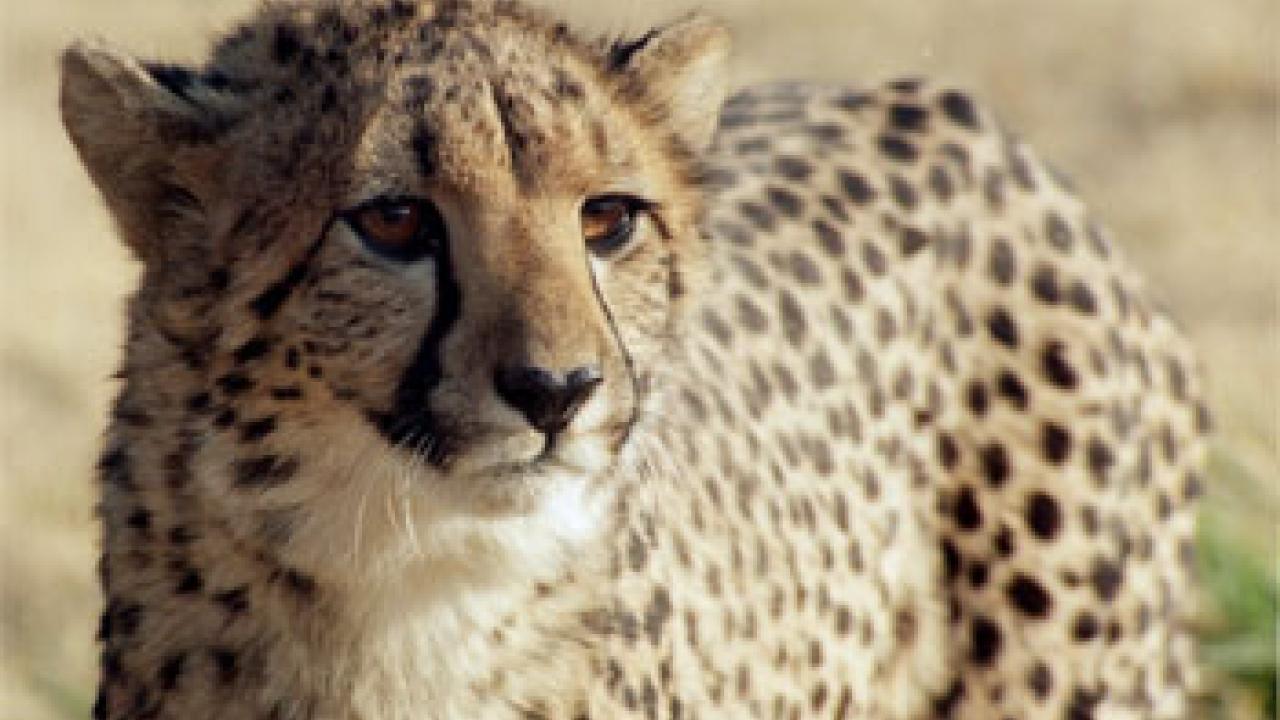Two veterinary specialists from the UC Davis School of Veterinary Medicine recently transported their equipment and expertise to Africa in an effort to help save wild cheetahs from extinction.
Veterinarian Autumn Davidson and ultrasonographer Tomas Baker joined researchers from the Smithsonian Institution for three weeks this summer at the Cheetah Conservation Fund International Research and Education Centre in Namibia. This world's-largest cheetah reserve is dedicated to ensuring the long-term survival of the cheetah, whose future is threatened by a remarkably small gene pool that makes the species vulnerable to being wiped out by disease or other environmental threats.
The collaborative research team from UC Davis and the Smithsonian was focused on developing a better understanding of the reproductive biology of captive female cheetahs, which have proven difficult to breed. The reserve is not a breeding facility, but provides homes for cheetahs that cannot be returned to the wild due to medical or behavioral problems.
Hauling ultrasound and scoping equipment with them, Davidson and Baker went prepared to conduct exams of the reserve's female cheetahs in order to develop techniques that will improve their reproduction. Captive cheetahs, numbering about 1,400 in some 65 countries, comprise approximately 10 percent of the world's remaining cheetah population. They serve as an important captive gene pool for research and a resource for rebuilding the wild cheetah population should it be struck by disaster.
"We hope to identify when is the best time to harvest eggs from the female cheetahs for in vitro fertilization and eventual transplant, and to develop a better understanding of why the females' fertility declines after eight years of age," explained Davidson. "As we examined the females at the reserve, we were looking both at the quality of their eggs and the status of their uterus."
Davidson and Baker plan to continue their collaboration with the reserve and have been invited to return as their schedules permit. They are working with a U.S.-based pet food company to provide food for the reserve's canine program, which trains and offers large guard dogs to local herders and ranchers, who, in turn, agree not to shoot wild cheetahs. They also hope to explore opportunities for involving UC Davis veterinary students in the reserve's many programs.
Media Resources
Pat Bailey, Research news (emphasis: agricultural and nutritional sciences, and veterinary medicine), 530-219-9640, pjbailey@ucdavis.edu
Autumn Davidson, Veterinary Medical Teaching Hospital, (530) 752-1393, apdavidson@ucdavis.edu
Tomas Baker, Veterinary Medical Teaching Hospital, (530) 752-8078, tbaker@vmth.ucdavis.edu
Lynn Narlesky, Dean's Office, Veterinary Medicine, (530) 752-5257, lnarlesky@ucdavias.edu
